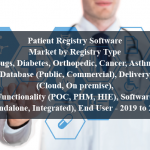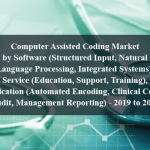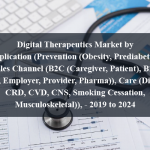OVERVIEW
The Clinical Alarm Management Market is currently valued at USD 3.2 billion in 2024 and will be growing at a CAGR of 15.1% over the forecast period to reach an estimated USD 5.62 billion in revenue in 2029. The clinical alarm management market is witnessing significant growth driven by the rising need to streamline healthcare workflows and ensure patient safety. Clinical alarm management systems play a crucial role in reducing alarm fatigue among healthcare professionals by prioritizing and contextualizing alarms, thereby improving response times to critical events. With advancements in technology, such as artificial intelligence and machine learning, these systems are becoming more sophisticated in their ability to differentiate between clinically significant alarms and nuisance alarms. Moreover, regulatory mandates aimed at enhancing patient safety, such as the Joint Commission’s National Patient Safety Goals, are driving healthcare facilities to invest in robust alarm management solutions. As hospitals strive to optimize their operational efficiency and deliver high-quality care, the demand for integrated alarm management platforms that seamlessly integrate with existing healthcare IT infrastructure is on the rise.
The increasing emphasis on patient safety and regulatory compliance is compelling healthcare facilities to adopt advanced alarm management solutions to mitigate alarm fatigue and improve response times to critical events. Additionally, the integration of artificial intelligence and machine learning technologies into alarm management systems is enhancing their ability to differentiate between clinically significant alarms and nuisance alarms, thereby improving overall efficiency. Moreover, the growing demand for integrated healthcare IT solutions and the need to streamline workflows are driving healthcare providers to invest in comprehensive alarm management platforms that seamlessly integrate with existing systems. Furthermore, the rising prevalence of chronic diseases and the subsequent increase in the volume of patient monitoring devices are further fueling market growth by necessitating more robust alarm management solutions to handle the influx of alerts and notifications.
Table of Content
Market Dynamics
Drivers:
The increasing emphasis on patient safety and regulatory compliance is compelling healthcare facilities to adopt advanced alarm management solutions to mitigate alarm fatigue and improve response times to critical events. Additionally, the integration of artificial intelligence and machine learning technologies into alarm management systems is enhancing their ability to differentiate between clinically significant alarms and nuisance alarms, thereby improving overall efficiency. Moreover, the growing demand for integrated healthcare IT solutions and the need to streamline workflows are driving healthcare providers to invest in comprehensive alarm management platforms that seamlessly integrate with existing systems. Furthermore, the rising prevalence of chronic diseases and the subsequent increase in the volume of patient monitoring devices are further fueling market growth by necessitating more robust alarm management solutions to handle the influx of alerts and notifications.
Key Offerings:
Key offerings in the clinical alarm management market include sophisticated alarm management systems equipped with advanced features such as artificial intelligence and machine learning algorithms to prioritize and contextualize alarms effectively. These systems often integrate seamlessly with existing healthcare IT infrastructure, offering interoperability and compatibility with various medical devices and electronic health record (EHR) systems. Additionally, comprehensive reporting and analytics capabilities allow healthcare providers to gain insights into alarm trends, optimize workflows, and enhance patient safety. Furthermore, vendor offerings may include customizable alert notification mechanisms and workflow automation tools to streamline alarm response processes and reduce clinician burden. Training and support services are also typically provided to ensure effective implementation and utilization of the alarm management solutions.
Restraints :
The clinical alarm management market has a good growth trajectory, but there are a number of obstacles that could prevent it from expanding. The intricacy of integrating alarm management systems with the current healthcare IT infrastructure is a major obstacle that can be expensive and time-consuming for healthcare providers. Obstacles also include worries about privacy compliance and data security, especially in light of the growing amount of patient health data collected and kept on alarm management platforms. Alarm weariness is still a problem, made worse by the large number of alerts that medical devices produce. This might make healthcare personnel less sensitive to warnings, which could jeopardise patient safety. Furthermore, insufficient knowledge and instruction regarding the significance of alarm management protocols among medical personnel could impede the efficient execution and use of alarm management remedies. Finally, the ability of healthcare facilities to engage in comprehensive alarm management solutions may be limited by budgetary restrictions and reimbursement issues in global healthcare systems, especially in settings with little resources. To ensure better patient outcomes and realise the full potential of the clinical alarm management business, it will be imperative to address these constraints.
Regional Information:
• In North America, the clinical alarm management market is driven by stringent regulatory standards, such as those set by the Joint Commission, which mandate the implementation of effective alarm management solutions to enhance patient safety and reduce alarm fatigue among healthcare professionals. The region boasts a robust healthcare IT infrastructure, with widespread adoption of electronic health records (EHR) systems and medical device integration, driving the demand for interoperable alarm management platforms that seamlessly integrate with existing technologies. Moreover, the presence of key market players and a strong focus on technological innovation contribute to the rapid growth of the market in this region.
• In Europe, the clinical alarm management market is characterized by increasing healthcare expenditure and a growing emphasis on patient-centered care. Regulatory initiatives, such as the Medical Device Regulation (MDR) and the European Union’s General Data Protection Regulation (GDPR), are driving healthcare facilities to invest in compliant alarm management solutions that prioritize patient safety and data security. Additionally, the region’s aging population and rising prevalence of chronic diseases are fueling the adoption of advanced alarm management systems to manage the increasing volume of patient monitoring devices and alarms effectively.
• In the Asia-Pacific region, the clinical alarm management market is experiencing rapid growth due to rising healthcare infrastructure investments, increasing adoption of healthcare IT solutions, and growing awareness of patient safety issues. Countries such as China and India are witnessing a surge in demand for alarm management systems driven by government initiatives to improve healthcare quality and access. Furthermore, the proliferation of mobile health technologies and telemedicine services is driving the need for remote alarm management solutions that enable real-time monitoring and intervention, particularly in rural and underserved areas. Overall, the Asia-Pacific region presents significant growth opportunities for market players looking to expand their presence in emerging healthcare markets.
Recent Developments:
• In June 2023, Ascom and Niels-Stensen-Kliniken Group signed a contract to support the installation of the Ascom smart alarming system solution and IP-DECT infrastructure. The project is worth more than 1 million Swiss francs, including services.
• In April 2023, Koninklijke Philips N.V. and Northwell Health entered a seven-year agreement to help the health system standardize patient monitoring, enhance patient care, and improve patient outcomes while driving interoperability and data innovation.
Key Players:
Philips Healthcare, Baxter International Inc., Vocera Communications, Connexall, Spok Inc., Ascom, GE Healthcare, Hill-Rom Holdings, Capsule Technologies, and Cerner Corporation.
1) What is the projected market value of the Clinical Alarm Management Market?
– The Clinical Alarm Management Market is expected to reach an estimated value of USD 5.62 billion in revenue by 2029.
2) What is the estimated CAGR of the Clinical Alarm Management Market over the 2024 to 2029 forecast period?
– The CAGR is estimated to be 15.1% for the Clinical Alarm Management Market over the 2024 to 2029.
3) Who are the key players in the Clinical Alarm Management Market?
– Philips Healthcare, Baxter International Inc., Vocera Communications, Connexall, Spok Inc., Ascom, GE Healthcare, Hill-Rom Holdings, Capsule Technologies, and Cerner Corporation.
4) What are the drivers for the Clinical Alarm Management Market?
– Healthcare facilities are adopting advanced alarm management solutions to improve patient safety and regulatory compliance. Artificial intelligence and machine learning technologies are enhancing efficiency. The growing demand for integrated IT solutions and the rise in chronic diseases demand robust alarm management solutions to handle
5) What are the restraints and challenges in the Clinical Alarm Management Market?
– The clinical alarm management market faces challenges such as integrating systems with healthcare IT infrastructure, privacy compliance concerns, alarm weariness, and insufficient knowledge among medical personnel. Additionally, budgetary restrictions and reimbursement issues may limit the ability to implement comprehensive solutions. Addressing these constraints is crucial for better patient outcomes and maximizing the potential of the clinical alarm management business.
6) What are the key applications and offerings of the Clinical Alarm Management Market?
– Clinical alarm management systems, equipped with advanced features like artificial intelligence and machine learning algorithms, integrate seamlessly with healthcare IT infrastructure, offer comprehensive reporting and analytics, customizable alert notification mechanisms, workflow automation tools, and training and support services for effective implementation and utilization.
7) Which region is expected to drive the market for the forecast period?
– North America is expected to have the highest market growth from 2024 to 2029
Why Choose Us?
Insights into Market Trends: Global Market Studies reports provide valuable insights into market trends, including market size, segmentation, growth drivers, and market dynamics. This information helps clients make strategic decisions, such as product development, market positioning, and marketing strategies.
Competitor Analysis: Our reports provide detailed information about competitors, including their market share, product offerings, pricing, and competitive strategies. This data can be used to inform competitive strategies and to identify opportunities for growth and expansion.
Industry Forecasts: Our reports provide industry forecasts, which will inform your business strategies, such as investment decisions, production planning, and workforce planning. These forecasts can help you to prepare for future trends and to take advantage of growth opportunities.
Access to Industry Experts: Our solutions include contributions from industry experts, including analysts, consultants, and subject matter experts. This access to expert insights can be valuable for you to understand the market.
Time and Cost Savings: Our team at Global Market Studies can save you time and reduce the cost of conducting market research by providing comprehensive and up-to-date information in a single report, avoiding the need for additional market research efforts.












